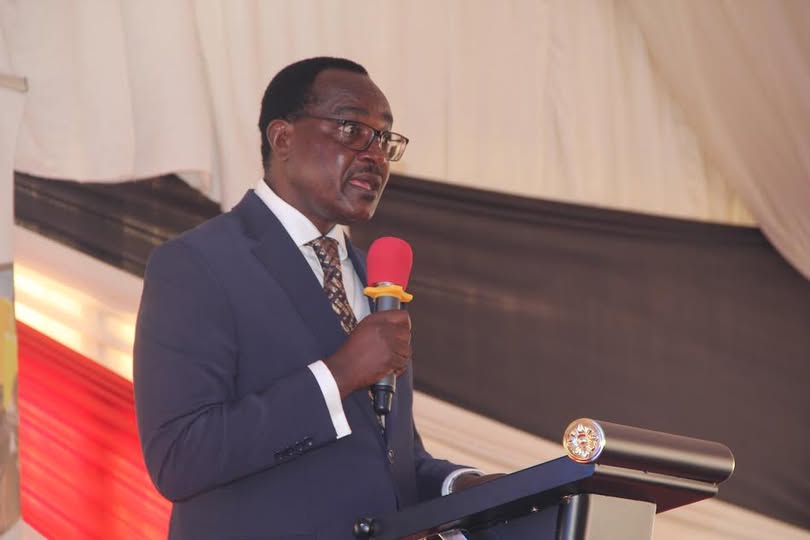How the new university funding model faced challenges with data
The new university funding model has encountered challenges due to insufficient funds, students’ inability to disclose their vulnerability status, and bribery allegations.
Additionally, Higher Education and Research Principal Secretary, Beatrice Inyangala, stated that the Ministry of Education’s belief that students from national schools could afford their university education did not provide reliable data.
Inyangala acknowledged that categorizing students into different bands has proven challenging, as the ministry has struggled to gather accurate data regarding students’ vulnerability and their families’ actual income.
“The Ministry conducted a survey to gather the data and discovered that 53 percent had left their forms in the cyber cafés for the staff to fill out. This undermined the data we were gathering to place the students in the appropriate bands,” stated Inyangala.
The PS also revealed that there was an assumption that students who attended national schools could be assigned to Band Three— which incurs higher costs.
“This posed a challenge as some students were on bursaries,” she clarified.
While appearing before the Senate Education Committee in a session led by Prof Margaret Kamar (Nominated), Inyangala struggled to persuade the committee that the new university funding model is a solution to higher education issues in the country. The senators questioned the Higher Education PS about the process of collecting student data.
Costlier
“How was the data collection conducted and why didn’t the ministry utilize chiefs to determine the students’ vulnerability? ” asked John Kinyua, the Laikipia senator.
In contrast, Nyandarua’s John Methu questioned why the model has rendered university education unaffordable, noting that under the Differentiated Unit Cost (DUC), students would pay only Sh16,000, while under the New Funding Model (NFM), a similar student would need to pay Sh90,000.
“This new model was intended to minimize financial barriers, but it appears to have made university education more costly and inaccessible for many students,” asserted Methu.
Lenku Seki Ole Kanar (Kajiado) inquired if the ministry had undertaken sufficient awareness efforts, particularly in marginalized regions, to ensure students correctly applied for placement in appropriate bands based on affordability.
“What has the ministry accomplished in areas like Turkana, Samburu, and other remote regions where impoverished parents cannot afford the bands assigned to them? ” asked Kanar.
In her reply, Inyangala informed the committee that when developing the parameters for the new funding model, the ministry considered income brackets, poverty indices, and the number of children in primary and secondary education for the students’ placement in bands.
She clarified that the NFM was introduced to improve upon the equity and efficiency goals of the previous funding framework based on the DUC.
“This model was put into practice in a setting where 23 out of 40 public universities faced technical insolvency. Its deployment has enhanced the flow of funds to universities and is expected to address the funding crisis faced by universities,” remarked Inyangala.
Inyangala noted that 91,881 out of 145,514 students, accounting for 63 percent, are categorized within Bands 1, 2, and 3, with the majority of students, 73 percent, or 132,430 students out of 145,514, paying fees of Sh60,000 or less annually.
At present, students who pay Sh30,000 and below total 54,274, representing 37 percent, while those paying between 30,001 and 60,000 are 52,169 (36 percent), those paying Sh60,001-Sh90,000 are 25,987, and those paying Sh90,001 and above are 13,084, accounting for only 8 percent, respectively.
In the Financial Year 2024/25, a total of 131,991 students from the KCSE 2023 group were funded through loans amounting to Sh13. 8 billion, alongside another 134,889 students who received scholarships valued at Sh13. 9 billion.
Geoffrey Monari, Chief Executive Officer of the Higher Education Loans Board (HELB), stated that the agency developed forms to determine the vulnerability of the students, dispatching around 30,000 forms to chiefs and assistant chiefs at the community level.
Nevertheless, out of the 30,000 forms, only 12,000 responses were returned, with 95 percent of the answers indicating that the students came from impoverished backgrounds and thus required 95 percent of government support.
“We attempted to gather precise data through the chiefs, but we were unable to obtain all of the responses. In some cases, we received reports that the chiefs were contacting the parents for facilitation,” Monari said. According to Monari, certain students change their phone numbers upon entering universities, leading to difficulties in fund disbursement.
“Nonetheless, we have streamlined the application process enabling students to monitor their applications through the portal,” he clarified.
The NFM, now in its second year of implementation, aims to guarantee that students from low-income backgrounds receive maximum governmental support via scholarships and loans.

